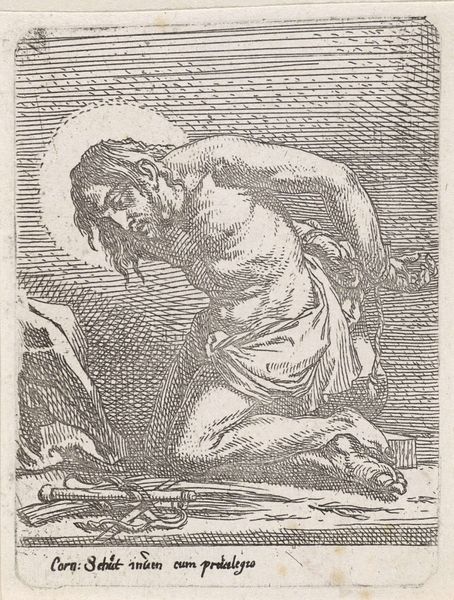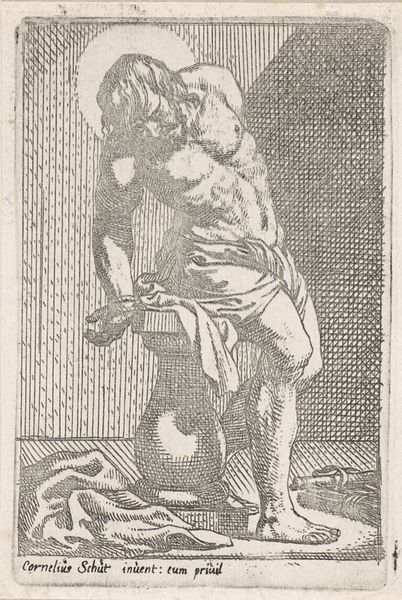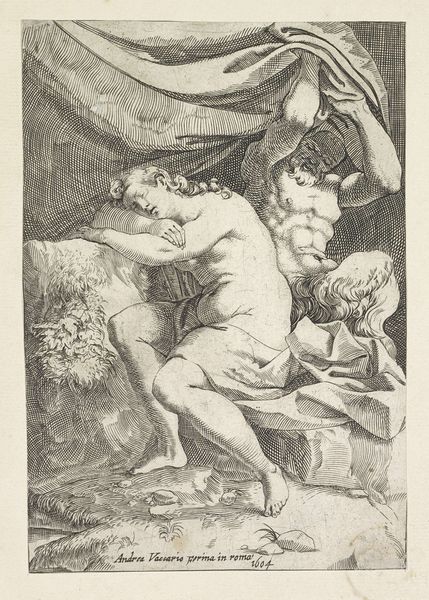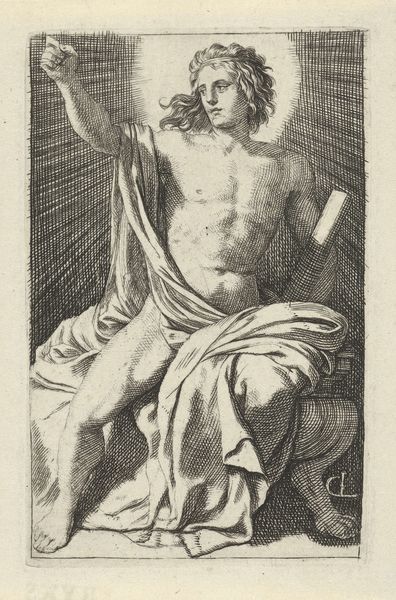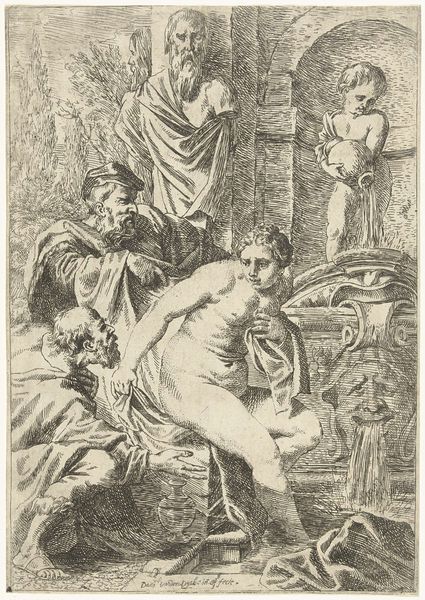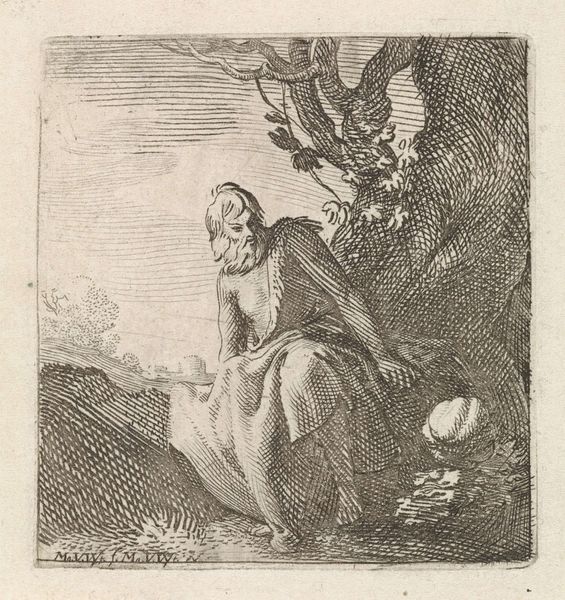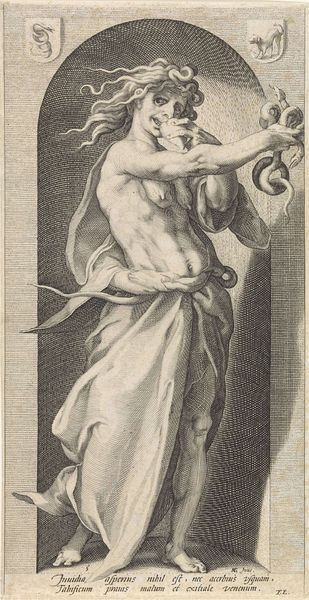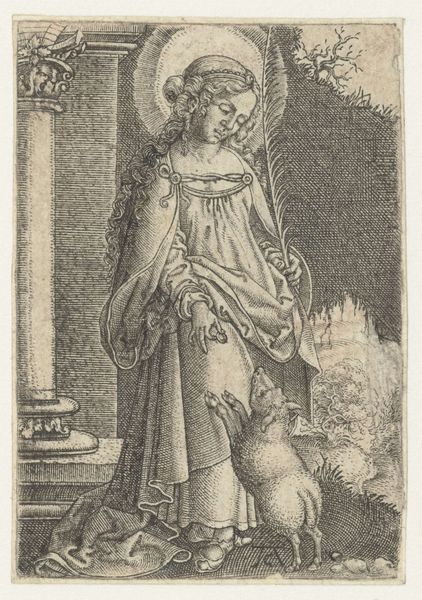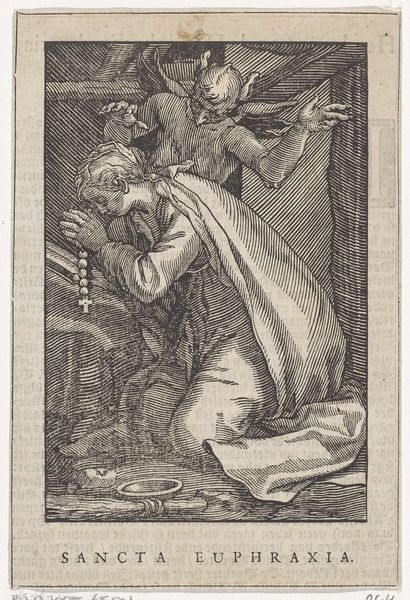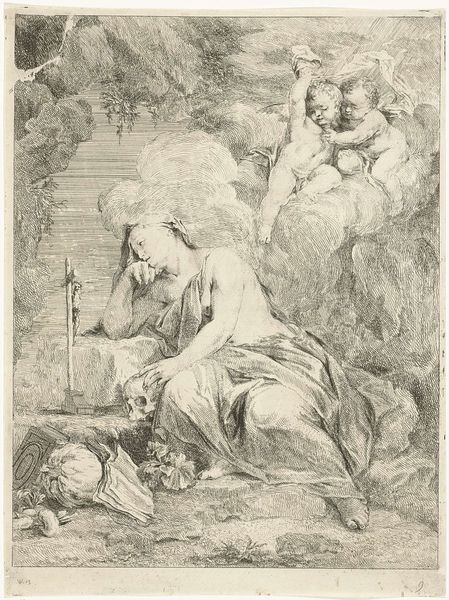
engraving
#
baroque
#
figuration
#
line
#
history-painting
#
engraving
Dimensions: height 95 mm, width 76 mm
Copyright: Rijks Museum: Open Domain
Curator: I am immediately struck by the vulnerability conveyed here. Despite the subject's implied divinity, we see raw humanity and suffering. Editor: Indeed. This is Cornelis Schut's "Christus aan de geselpaal," or "Christ at the whipping post," an engraving, placing it within a broader context of the proliferation of devotional images and the power of the printing press in early modern Europe. Curator: The halftones create an emotional resonance and amplify the mood. Notice how the sharp lines articulate every muscle. Editor: Absolutely. In religious iconography, Christ's scourging is powerfully symbolic of both immense suffering and ultimate redemption, offering devotees a powerful connection through empathy and reflection. Curator: Looking at Schut, his engravings were accessible to a much wider audience than paintings, weren’t they? The piece invites meditation on themes of sacrifice and pain, making them intensely personal and deeply ingrained in the religious and social fabric of the time. Editor: Very true, it raises interesting questions about the distribution of visual culture during the Baroque. What was the impact of bringing such scenes into people's homes? Curator: It is something to ponder, thinking about the dissemination and reception of these images outside the confines of churches or aristocratic collections and into the daily lives of ordinary people. Editor: It truly illustrates how an image of suffering can become an object of both reverence and a catalyst for social awareness and introspection.
Comments
No comments
Be the first to comment and join the conversation on the ultimate creative platform.
